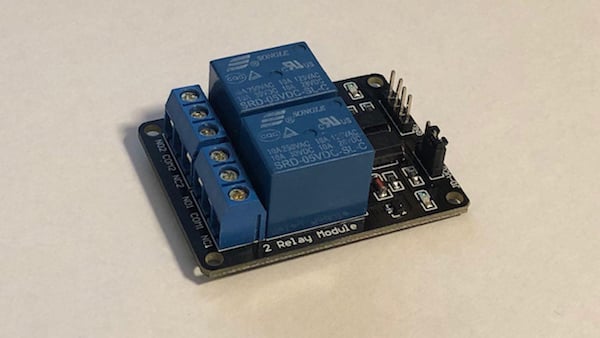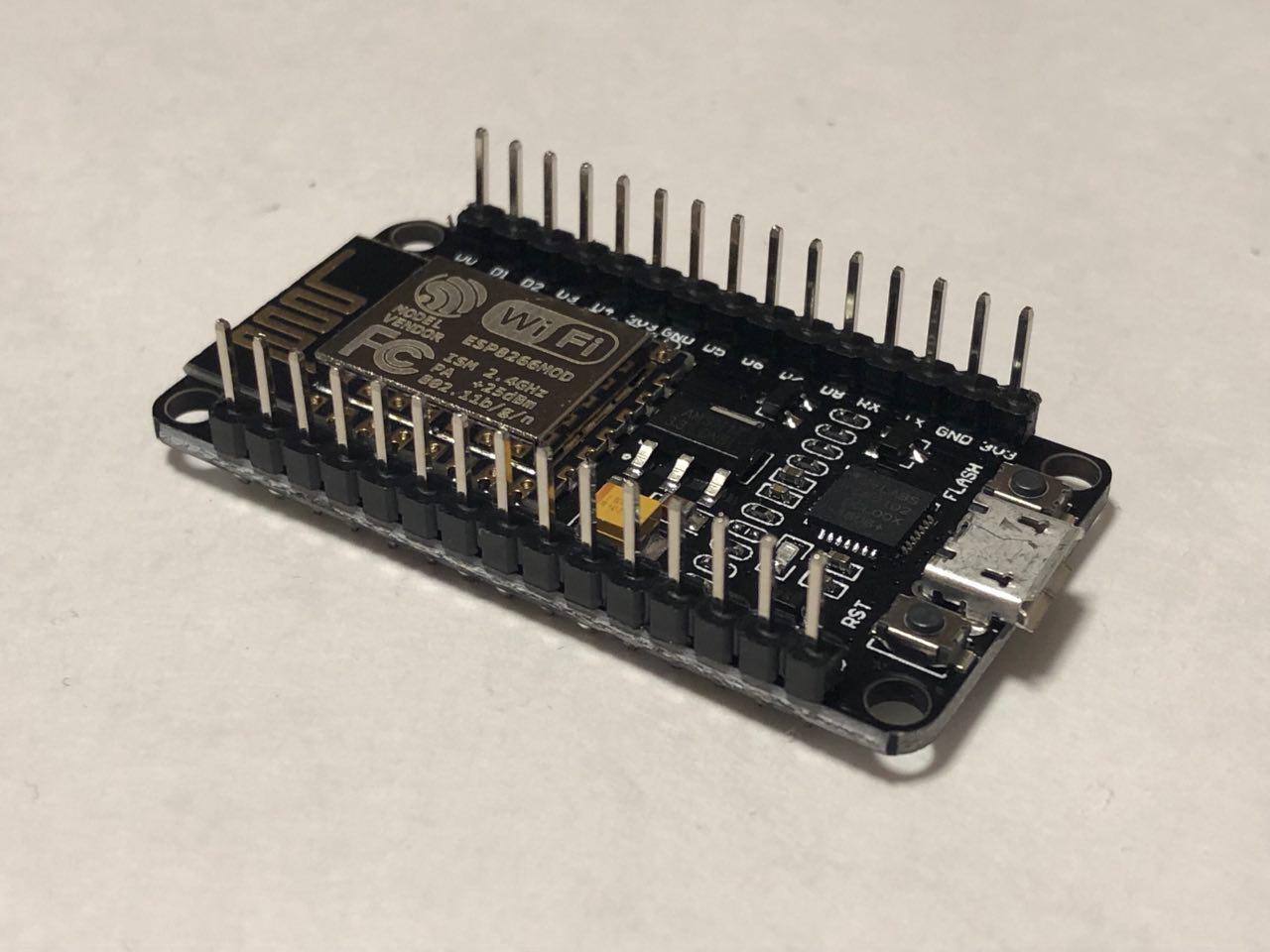-
1Step 1
The Hardware
The main component of this build is a simple relay board that can be used to switch voltages up to 250V AC and a maximum current of 10 amperes:
![simple relay board]()
A simple relay board for higher voltage projects.
It’ll be controlled by an ESP8266 based IoT developer board which is fully compatible with the Arduino IDE. Alternatively, you could also use a standard Arduino and an ESP8266 (or similar) breakout board.
![esp8266]()
The ESP8266.
You only need to make two connections between these devices. One of them is ground, the other is a control line for switching the relay which I chose to connect to D2 (digital pin two) of the developer board.
The relay and the MCU need to be connected to a five-volt power supply which, in my case, is accomplished with a simple DC jack.
Other than that, you’ll also need a standard mains socket, an IEC plug, preferably one with an earth pin, and a switch for turning the MCU ON and OFF. Furthermore, an enclosure is needed. I chose to go with a standard grey project box:
-
2Code
#include <ESP8266WiFi.h> #define RELAY_PIN D2 const char* ssid = "YOUR_WIFI_NETWORK"; const char* pass = "YOUR_NETWORKS_PASSWORD"; WiFiServer server(80); void setup() { Serial.begin(9600); // You could add an EEPROM to store the last state if the device gets powered off. // See: https://maker.pro/arduino/tutorial/how-to-permanently-store-data-on-your-arduino // // It's also possible to store the website and stylesheets/additional scripts on an SD // card and display the files to a client when they connect. // See: https://maker.pro/arduino/tutorial/how-to-use-an-sd-card-with-your-arduino // // However, this simple example will always start with the relay turned on and a very // basic HTML page with two buttons. pinMode(RELAY_PIN, OUTPUT); digitalWrite(RELAY_PIN, HIGH); // Connect to your local network WiFi.begin(ssid, pass); while (WiFi.status() != WL_CONNECTED) delay(250); Serial.print("Connected to network: "); Serial.println(ssid); // Start the server // A client will connect to this server to change the state of the relay server.begin(); Serial.print("Server started with address: "); Serial.print("http://"); Serial.print(WiFi.localIP()); Serial.println("/"); } void loop() { // Check for incoming connections WiFiClient client = server.available(); if (!client) return; // Wait for the client to send data while(!client.available()) delay(5); // Read the first line of the HTTP request // which will contain something like // METHOD /requested_url HTTP_VERSION // for example: // PUT /dev2?relay=1&state=on HTTP/1.1 // However, for the sake of simplicity this device will // respond to GET requests so that they can be sent with // any web browser. Requests to this device will look // similar to this: // GET /state=on HTTP/1.1 String request = client.readStringUntil('\r'); client.flush(); int state = 0, error = 0; // Check, whether the request contains "/state=" if (request.indexOf("state=") != -1) { // HIGH and LOW are swapped in this program because my // relay is turned on when its input pin is pulled LOW. if(request.indexOf("state=on") != -1) { digitalWrite(RELAY_PIN, HIGH); state = LOW; } else if (request.indexOf("state=off") != -1) { digitalWrite(RELAY_PIN, LOW); state = HIGH; } else { error = 1; Serial.print("Unknown request: "); Serial.println(request); } } // Return the response // If no error occurred, send an HTML page with two buttons // so that the device can be managed. // Otherwise, send an error message if(error == 0) { // Return a response header client.println("HTTP/1.1 200 OK"); client.println("Content-Type: text/html"); // The HTTP response body is separated from the header by an empty line // (actually a line containing \r\n, but this will work) client.println(""); // Return the response body (an html page) client.println("<html>"); client.println("<head>"); client.println("<title>Simple home automation</title>"); client.println("</head>"); client.println("<body>"); client.print("The relay is turned "); client.print(state==HIGH?"on":"off"); client.println("<br> <br>"); client.println("Change state:"); client.println("<a href=\"/state=on\"><button>Device on</button></a>"); client.println("<a href=\"/state=off\"><button>Device off</button></a>"); client.println("</body>"); client.println("</html>"); } else { // Return a response header client.println("HTTP/1.1 400 Bad Request"); client.println("Content-Type: text/html"); client.println(""); client.println("<html>"); client.println("Unknown request parameter supplied!<br/>"); client.println("<a href=\"/\">Back to main page</a>"); client.println("</html>"); } }
DIY Home Automation System
Home automation is a hot topic nowadays and even the simplest components of such a system can cost a lot. Therefore building custom devices
 Romeo hackster
Romeo hackster

Discussions
Become a Hackaday.io Member
Create an account to leave a comment. Already have an account? Log In.